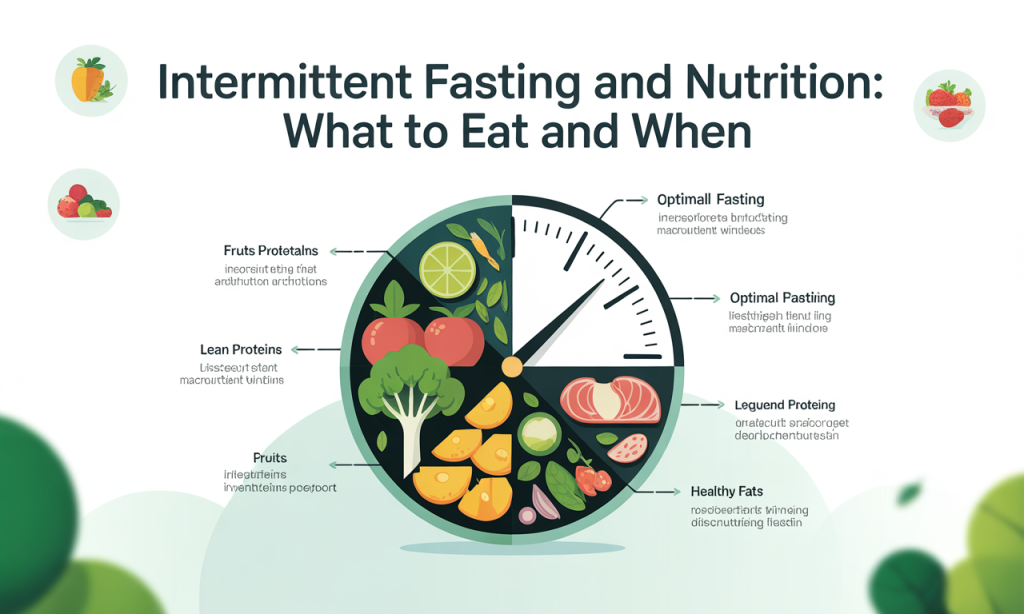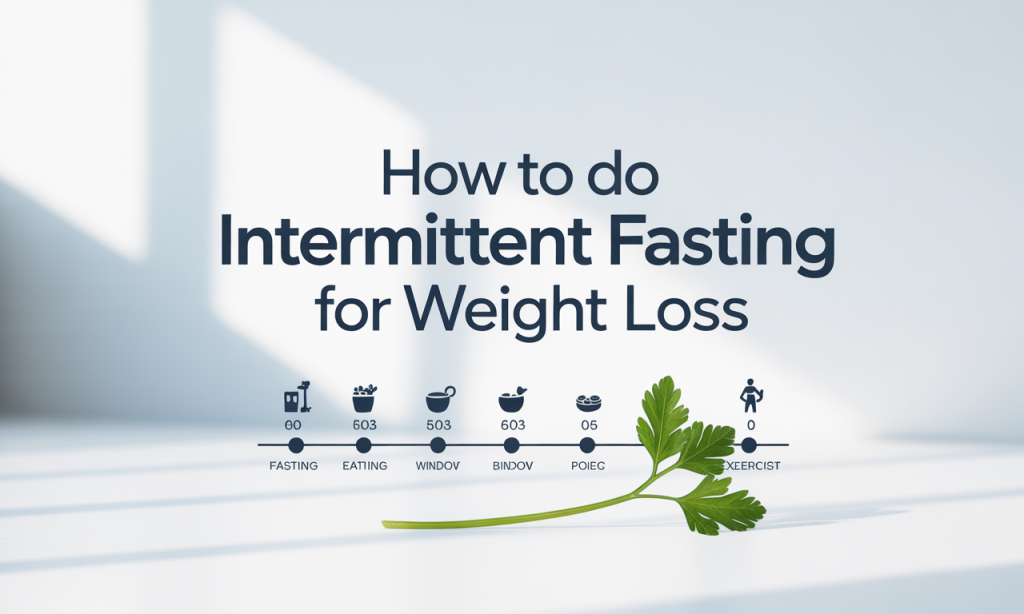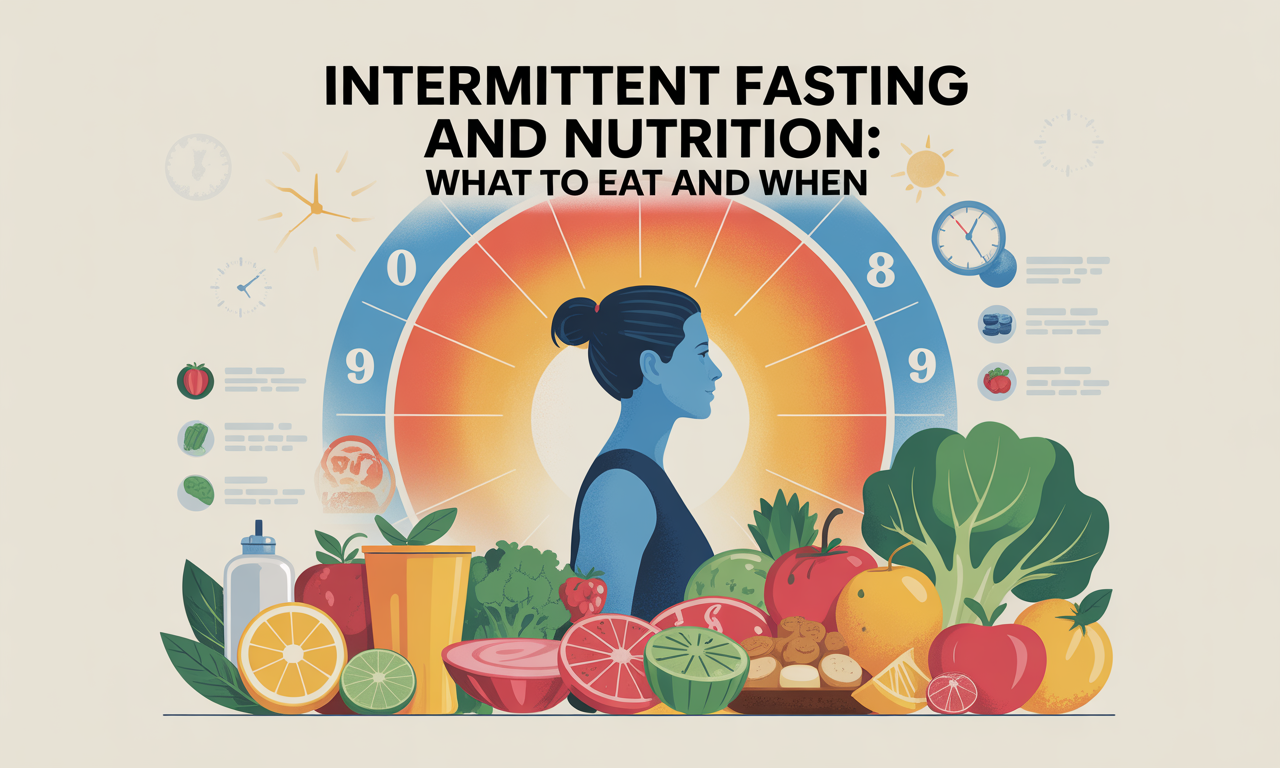In recent years, intermittent fasting has become wildly popular as a diet and a lifestyle that promises better health, increased metabolism, and mental clarity. But while the method is all about when you eat, what you eat is equally important if you want to experience all of its benefits. This article will discuss intermittent fasting, how it works, how to do intermittent fasting for weight loss, and what to eat while fasting for the best results.
What Is Intermittent Fasting?
Intermittent fasting refers to cycling between periods of eating and fasting. Instead of what to eat, it looks at when to eat. It’s not a diet in the traditional sense but more of a way of life.
The idea behind intermittent fasting is that our ancestors hardly ever had a chance to eat enough food to meet all their nutritional needs (you know, because they were busy running from sabertooth tigers, pulling berries off trees, and starting campfires); so even without all our modern research studies, it’s doubtful they were putting themselves on the path to Type 2 diabetes in doing so. Today, this principle has adapted with things like structured eating and fasting windows, and is a viable tool for modern optimal health.
What Is Intermittent Fasting for Weight Loss?

Intermittent fasting for weight loss involves focusing on shifting your body from burning glucose (sugar) to stored fat; that’s the body’s preferred fuel, no matter what. When you fast, your levels of insulin decline, and your body starts breaking down fat cells for energy. This metabolic change is crucial to optimal fat burning.
What is intermittent fasting weight loss for? In addition to helping lower calorie intake and fat loss, it can increase insulin sensitivity, decrease inflammation, a nd promote cell repair. For others, the straightforwardness of just not eating for specific hours is enough to help curb snacking and overeating.
Popular Intermittent Fasting Schedules
There’s no one-size-fits-all intermittent fasting schedule. One or another makes the most sense depending on your lifestyle, activity level , and weight loss goals. Here are a few common types:
1. The 16/8 Method
This is the most popular and beginner-friendly plan: Fast for 16 hours and eat during an 8-hour window (e.g., noon to 8 PM).
2. The 5:2 Diet
Eat normally five days a week and consume only about 500–600 calories on the other two non-consecutive days.
3. Eat-Stop-Eat
Involves fasting for 24 hours once or twice a week. This is a more advanced approach and may not be suitable for beginners.
4. Alternate-Day Fasting
Fast every other day, consuming very few or no calories on fasting days.
5. The Warrior Diet
Fast for 20 hours and eat a large meal within a 4-hour window at night.
No matter the method, the ultimate goal is to create a calorie deficit and allow your body ample time to burn fat.
How to Practice Intermittent Fasting
Many people are curious about how to do intermittent fasting in a way rich with wisdom. To begin, here are a few easy steps:
- Most people’s natural rhythms.
- Stay hydrated: Drink water, herbal teas, or black coffee during fasting.
- Eat nutrient-dense meals: Prioritize whole foods, lean proteins, fiber, and healthy fats during eating windows.
- Avoid sugar and refined carbs: These can cause insulin spikes and make fasting harder.
- Listen to your body: Start slow. If you feel light-headed or excessively fatigued, consult a professional.
Consistency is important when intermittent fasting for weight loss. Monitor your results weekly and adjust your diet if necessary.
How to Do Intermittent Fasting for Weight Loss

Now, let’s get specific: how to do intermittent fasting for weight loss in a way that’s easy, avoids a regression to old bad habits, and—most importantly—ensures that whatever you lost, you gained back in quality.
Understand Your Caloric Needs
(And I mean even if you’re fasting, if you eat more calories than you burn, you will not lose weight. Enter your age, gender, and activity level into a calorie calculator to determine how many calories you need daily.
Focus on Macronutrient Balance
A balanced intake of protein, healthy fats, and complex carbohydrates is essential during intermittent fasting. Protein supports muscle maintenance, fats promote hormone health and satiety, while complex carbs provide sustained energy. Prioritizing nutrient-dense foods helps maximize the benefits of fasting and prevents overeating during eating windows.
- Protein: Helps with satiety and muscle retention.
- Fats: Healthy fats like avocados, nuts, and olive oil support hormone health.
- Carbohydrates: Stick to complex carbs like oats, brown rice, and vegetables for lasting energy.
Plan Meals in Advance
If you’re very hungry, it’s easy to overdo it during your eating window. Meal prepping can prevent mindless snacking and maintain portion control.
Break Your Fast Gently
After a long fast, ease back by eating something light, such as a smoothie, a cup of Greek yogurt, or a small bowl of bone broth, so you don’t overwhelm your digestive system.
What to Eat While Fasting?
Breakfast/First Meal (e.g., Noon)
- A veggie-packed omelet with avocado
- A green smoothie with spinach, banana, protein powder, and chia seeds
- Overnight oats with almond butter and berries
Lunch
- Grilled chicken or tofu bowl with quinoa, roasted vegetables, and tahini dressing
- Turkey lettuce wraps with hummus and olives.
- Lentil soup with a slice of sourdough bread
Dinner
- Baked salmon with steamed broccoli and sweet potato
- Stir-fried tofu and vegetables with brown rice
- Zucchini noodles with turkey meatballs and marinara
Snacks (if needed within the window)
- Mixed nuts
- Greek yogurt
- Hard-boiled eggs
- Fresh fruit
Avoid processed, sugary snacks, which can undermine your efforts and spike your insulin levels.
What Not to Eat During Intermittent Fasting
Avoid these during eating windows:
- Sugary drinks like soda or juice
- Refined carbs (white bread, pastries)
- Deep-fried foods
- Excess alcohol
- Overeating, even if it’s “healthy” food
And during fasting windows, steer clear of:
- Milk or cream in coffee
- Any calorie-containing drinks
- Gum with sugar
Remember, even small amounts of calories can disrupt the fasted state.
Tips for Success with Intermittent Fasting
- Be consistent: Results come with time and commitment.
- Pair fasting with exercise: Resistance training helps preserve muscle mass during weight loss.
- Sleep well: Poor sleep can increase hunger hormones.
- Manage stress: Chronic stress raises cortisol, which can lead to fat retention.
- Track your progress: Journaling or using apps can keep you motivated and accountable.
Common Mistakes to Avoid
- Overeating During Eating Windows
- Not drinking enough water
- Not having meals with adequate nutrition, and so forth
- Neglecting micronutrients
- Expecting overnight results
- It’s key to think of intermittent fasting as a lifestyle, not a crash diet.
Is Intermittent Fasting Right for You?
Though intermittent fasting provides many advantages, it’s not suitable for every person:
- Pregnant or lactating women
- People with eating disorders
- (unless in the presence of diabetes)
- Children or teens
As always, make significant changes to your eating habits only with guidance from your health care provider.
Conclusion
So, what is intermittent fasting really all about? It’s an intelligent, targeted way to eat that can help you lose weight, gain energy , and feel more in control of your health. However, for the most significant benefit, you must pay attention to what and when you eat it.
Now that you know how to do intermittent fasting, you can create your own schedule that works for you based on your lifestyle and health goals. If you want to lose weight, have more energy, and possibly improve the way your body metabolizes food, intermittent fasting combined with a clean nutrition plan may be the secret you’ve been searching for.
